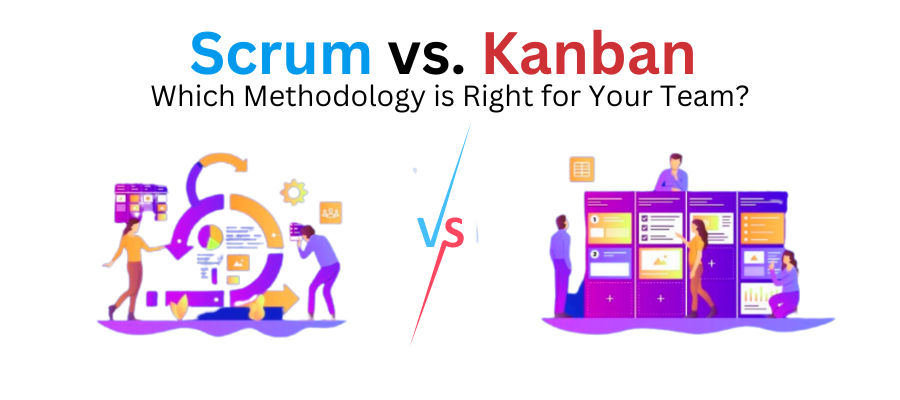Scrum and Kanban: Integrating Two Agile Methodologies
In the ever-evolving landscape of Agile methodologies, Scrum and Kanban stand out as two powerful frameworks that, while distinct, can complement each other when integrated thoughtfully. This exploration delves into the principles of Scrum and Kanban, offering insights into how teams can seamlessly integrate these methodologies to enhance flexibility, adaptability, and overall project success.
1. Understanding Scrum: Iterative and Time-Boxed Development
Scrum, known for its iterative and time-boxed approach, provides a structured framework for project development. We'll explore the core elements of Scrum, including roles (Product Owner, Scrum Master, Development Team), ceremonies (Sprint Planning, Daily Standup, Sprint Review, Sprint Retrospective), and artifacts (Product Backlog, Sprint Backlog, Increment).
2. Exploring Kanban: Visualizing Workflow and Continuous Delivery
Kanban, with its emphasis on visualizing workflow and enabling continuous delivery, offers a flexible framework for managing work. We'll discuss key Kanban principles, such as visual boards, limiting work in progress (WIP), and continuous improvement, that contribute to a more adaptive and flow-centric approach.
3. Integrating Scrum and Kanban: The Scrumban Approach
The integration of "What Is Scrum" and Kanban, often referred to as Scrumban, combines the strengths of both methodologies. We'll explore how teams can leverage the time-boxed sprints of Scrum while incorporating Kanban's visual management and flexibility to enhance adaptability, transparency, and overall efficiency.
4. Visualizing Work with Kanban Boards in Scrum
Kanban boards provide a visual representation of work items and their progress. We'll discuss how teams practicing Scrum can integrate Kanban boards to enhance visibility into tasks, improve collaboration, and streamline the flow of work throughout the sprint.
5. Limiting Work in Progress (WIP) within Sprints
One of Kanban's key principles is limiting Work in Progress (WIP) to optimize flow. We'll explore how Scrum teams can adopt WIP limits within sprints to prevent overloading team members, improve focus, and ensure that tasks move through the sprint stages efficiently.
6. Continuous Delivery and Kanban in Scrum
Kanban's focus on continuous delivery aligns well with Scrum's incremental development. We'll discuss how teams practicing Scrum can embrace Kanban principles to facilitate the continuous delivery of features, providing value to stakeholders at the end of each sprint.
7. Flexibility in Sprint Planning with Kanban Practices
Kanban's flexibility in responding to changing priorities can enhance Sprint Planning in Scrum. We'll explore how teams can integrate Kanban practices to adapt to evolving requirements, reprioritize tasks, and ensure that the sprint backlog remains aligned with current project needs.
8. Metrics and Analytics: Combining Scrum and Kanban Insights
Both Scrum and Kanban provide valuable metrics for assessing team performance. We'll discuss how teams can integrate metrics from both methodologies, such as cycle time and lead time from Kanban and velocity from Scrum, to gain comprehensive insights into project progress and areas for improvement.
9. Retrospectives and Continuous Improvement in Scrumban
Retrospectives are integral to both Scrum and Kanban. We'll explore how teams practicing Scrumban can conduct effective retrospectives, fostering a culture of continuous improvement by reflecting on both the structured elements of Scrum sprints and the flow-centric principles of Kanban.
10. Scaling Scrumban for Large Projects and Teams
Scaling Scrumban for large projects involves careful coordination. We'll discuss how organizations can scale Scrumban, adopting practices such as Scrum of Scrums or Large-Scale Kanban, to maintain agility and adaptability while orchestrating complex projects with multiple teams.
11. Training and Transitioning Teams to Scrumban
Transitioning from Scrum or Kanban to Scrumban requires training and a thoughtful approach. We'll explore strategies for training teams in Scrumban principles, facilitating a smooth transition, and ensuring that team members embrace the integrated framework.
12. Common Challenges and Solutions in Scrumban Adoption
The adoption of Scrumban may encounter challenges. We'll address common pitfalls and provide practical solutions for overcoming challenges such as resistance to change, maintaining balance between Scrum and Kanban practices, and ensuring effective collaboration within the integrated framework.
Integrating Scrum and Kanban can lead to a powerful synergy that combines Scrum's structured approach with Kanban's flow-centric principles. Whether you're a Scrum Master, Product Owner, or team member, this guide promises valuable insights into the world of Scrumban, empowering you to create a customized Agile framework that suits the unique needs and dynamics of your projects.

Comments
Post a Comment